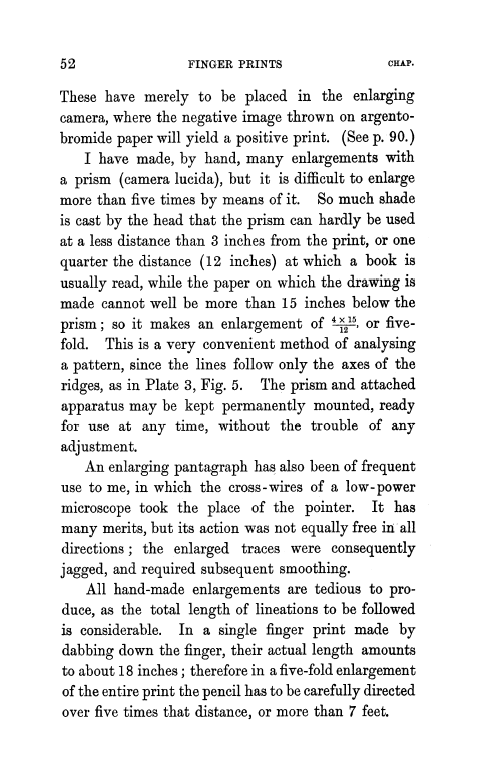| ||||||

OCR Rendition - approximate
52 FINGER PRINTS CHAP. These have merely to be placed in the enlarging camera, where the negative image thrown on argentobromide paper will yield a positive print. (See p. 90.) I have made, by hand, many enlargements with a prism (camera lucida), but it is difficult to enlarge more than five times by means of it. So much shade is cast by the head that the prism can hardly be used at a less distance than 3 inches from the print, or one quarter the distance (12 inches) at which a book is usually read, while the paper on which the drawing is made cannot well be more than 15 inches below the prism; so it makes an enlargement of 41215, or fifivefold. This is a very convenient method of analysing a pattern, since the lines follow only the axes of the ridges, as in Plate 3, Fig. 5. The prism and attached apparatus may be kept permanently mounted, ready for use at any time, without the trouble of any adjustment. An enlarging pantagraph has also been of frequent use to me, in which the cross-wires of a low-power microscope took the place of the pointer. It has many merits, but its action was not equally free in' all directions ; the enlarged traces were consequently jagged, and required subsequent smoothing. All hand-made enlargements are tedious to produce, as the total length of lineations to be followed is considerable. In a single finger print made by dabbing down the finger, their actual length amounts to about 18 inches; therefore in a five-fold enlargement of the entire print the pencil has to be carefully directed over five times that distance, or more than 7 feet.
|